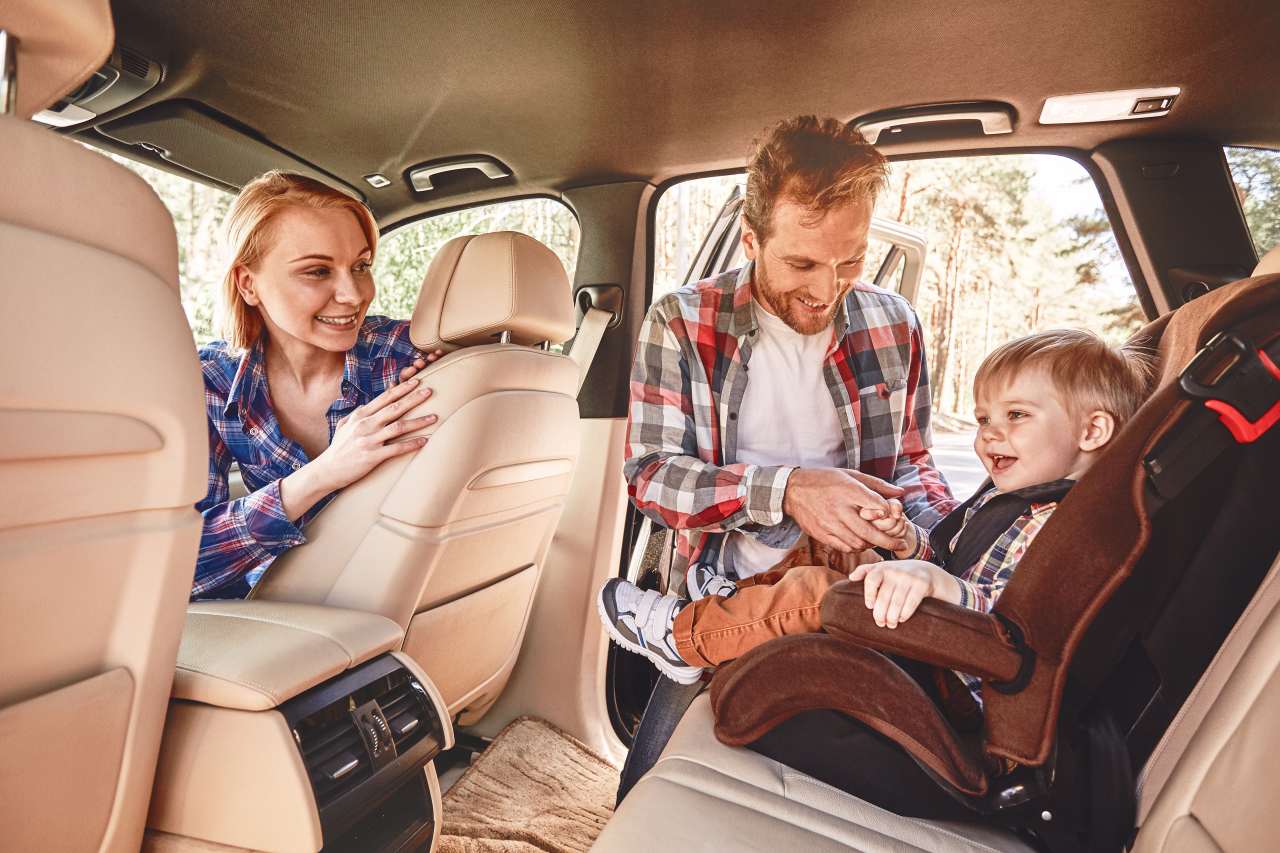When it comes to SUVs these days, it seems anything goes. There are coupe-style ones, box-shaped ones - even convertible versions are now rolling around Australia.
So it should come as no surprise to see an increasing number of car makers beefing up perfectly good hatchbacks and calling them SUVs, too.
Infiniti was one of the earliest to take the leap when, back in 2016, they gave the Q30 an SUV makeover and launched the QX30.
For my weekend test I drove the Infiniti QX30 2019 to see what’s new, what's good and what's not-so-good about it.
Priced at $56,900, the XQ30 is a premium small SUV with a feast of standard kit, including 19-inch alloy wheels, LED headlights with high-beam assist, heated leather seats, a flat-bottomed leather steering wheel, leather trim on the doors and dash, and Alcantara roof-lining. The Blade Silver metallic paint on my test car was the only ($1200) option, pushing the as-tested price to $58,100.
So, does the QX30 have the SUV chops to perform as a family hauler? My three kids and I had the weekend to find out.
Infiniti QX30 2019: Sport
| Engine Type | Turbo 4, 2.0L |
|---|---|
| Fuel Type | Premium Unleaded Petrol |
| Fuel Efficiency | 6.9L/100km (combined) |
| Seating | 5 |
| Price From | $21,450 - $27,170 |
Saturday
Our schedule for the day included a trip to a museum in the city and then a visit to the grandparents in the afternoon.
While the bones of this car are borrowed from Mercedes-Benz, the exterior design language is all Infiniti. It’s an odd combination (part-hatch, part-SUV) with a ride height that's 35mm higher than the Q30. This, combined with the plastic black flares around the wheel arches and underside of the body edges, provide the only indications of its crossover-style character.
The side profile has a swept-back look that tapers to a stout rear flanked by distinctive C-pillars. The two sharp accent lines running along its sides are a peculiar design feature and seem a little overdone to me. Its curvy design continues up front with the double-arch grille and three-dimensional mesh, and its strongly styled double-wave bonnet.
.jpg)
The cabin has a premium feel, with a nice mixture of soft and hard surfaces throughout. Infiniti have done a good job of blending a number of their own components with those of the Mercedes Benz GLA donor car. Thanks to the electrically adjustable seat and steering column I was quickly able to set my drivers seat to a suitable position. The leather-wrapped seats provided ample comfort and support in all the right places.
The high window sills and low roofline make for a surprisingly cosy cabin up front, which then becomes rather cramped in the rear. The back seat is not somewhere an adult will want to sit for long. I'm 180cm tall, and my knees were pinned up against the driving seat with only an inch or so of headroom above.
For my kids it was not much better, with the high sills reducing their ability to see out the windows, which then resulted in heated battles for the front seat before every trip.
The dash layout and design feels slightly dated, with numerous buttons down the centre stack underneath a small (but simple to operate) 7.0-inch touchscreen that will be familiar to many Nissan owners.
Our test car came with a 10-speaker Bose audio system, dual-zone climate control, a fixed glass roof with sun shade, fully electric front seats and Nissan’s 360-degree "around-view" camera.
The camera came in handier than expected, with the QX30’s narrow aspect and large B and C pillars making visibility when parking and overtaking a trickier prospect than it otherwise should be for a car of this size.
Sunday
The QX30 was on grocery shopping duty today, followed by various trips around the suburbs taking the kids to the park and to their friends' houses.
Under the bonnet lies a turbocharged 2.0-litre four-cylinder engine producing 155kW and 350Nm, matched with a seven-speed dual-clutch automatic transmission directing drive to all four wheels. On paper, these are decent figures for a sporty hatch let alone a small SUV.
There are three driving modes to choose from – Economy, Sport and Manual, though none of which really delivered the sporty drive I was hoping for. Instead, I was happy to punt around in Eco mode as it was less jarring than Sport, which simply holds the gears for longer.
It delivers a pretty punchy response from a standing start but quickly runs out of puff as the revs increase, with overtaking at mid-range speeds requiring more time and space than is ideal.
.jpg)
In Economy mode, the transmission shifts were reasonably quick and smooth, but there was some hesitation at lower speeds - particularly on the downshifts. In Manual mode, the gear changes using paddles were quick enough.
Around the suburbs, the QX30 provided a comfortable and compliant ride with minimal noise intrusion into the cabin, making for quite a pleasant and quiet driving experience.
There’s not a great deal of storage, with a shallow centre console bin, two cup holders up front, and bottle holders in the four doors. Passengers in the backseat score two cup holders in the centre armrest, air vents and a 12-volt outlet.
The boot has 430 litres of space available which is impressive, but it comes at a cost. Gone is the spare tyre under the boot floor, with Infiniti choosing to house the sound system’s sub-woofer and an inflator kit there instead.
.jpg)
The QX30 scores some decent safety kit, including traffic sign recognition, forward collision warning with forward emergency braking (AEB), that surround-view camera, lane departure warning, blind spot monitoring, a pedestrian-protecting pop-up bonnet and seven airbags. The rear seats also benefit from two sets of ISOFIX child seat mounting points.
It’s worth noting the QX30 safety rating of five stars applies to its sibling, the Q30, which was awarded back in 2015. It has not been tested to the more demanding 2019 standards.
Over the weekend, the QX30 covered around 270km of suburban and city driving, the majority in Eco mode, with the trip computer indicating a fuel consumption reading of 10.2 litres/100km. This figure puts it almost 50 per cent higher than Infiniti’s claimed fuel consumption (combined) of 6.9 litres/100km.
Verdict
The QX30 is a comfortable and smooth car to drive around town, and has the premium trimmings to keep would-be buyers happy. While some appreciate the bold and distinctive styling, it might not be to everyone's tastes.
In my opinion, though, it falls short on delivering the space, refinement and high-spec equipment you'd expect from a premium SUV at that asking price.
Is the Infiniti QX30 on your family car shopping list? Tell us in the comments below.
Range and Specs
| Vehicle | Specs | Price* |
|---|---|---|
| Sport | 2.0L, Premium Unleaded Petrol, 7 SPEED AUTO DUAL CLUTCH | $21,450 - $27,170 |



.jpg)
.jpg)
.jpg)
.jpg)
.jpg)
.jpg)
.jpg)
.jpg)
.jpg)
.jpg)
.jpg)
.jpg)
.jpg)







.png)















.jpg)


.jpg)

Comments